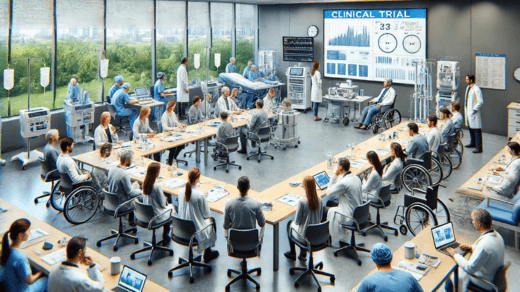The doctors and researchers put a lot of effort into developing new medicines and conducting clinical trials. These trials take a long time and take a lot of work. The researchers have to take care of many things and efficiently perform these trials to check if the medicines are working fine or not. If you are curious about clinical trials and how researchers conduct them, then you are at the right place. In this post, you will learn everything about the
#1 – Planning and Preparation
Planning and preparation are among the most important parts of clinical trials. The researchers have to manage everything that can happen in the trials, whether it’s preparing the medicines, identifying obstacles, potential side effects, or anything else. They also have to create a blueprint or plan of action for the trials and then submit that to the regulatory authorities.
#2 – Approvals and Funding
After the blueprint is designed, researchers must obtain the necessary approvals from the authorities. They submit their blueprints to regulatory agencies to review the study to make sure it meets all safety and ethical standards. Once approved, the main aim is to garner funding for running these trials. Usually, medical and pharmaceutical companies sponsor these trials, as they can benefit from them. The trials can begin once the funding is received and the regulatory approval is given.
#3 – Recruitment of Participants
Finding the participants is one of the hardest parts for the researchers. The recruitment process is the most difficult one, so the researchers have to use all the tactics to gain participants. They can reach out to other doctors, make public advertisements, or scavenge for people who fit the eligibility criteria. Once the participants are recruited, the researchers start the trials.
#4 – Conducting the Trial
With participants enrolled, the clinical trial can officially begin. These trials are conducted in three to four phases. Each phase has a different aim, but the researchers have to conclude. In each phase, the researchers administer the medicines, observe the participants, understand the safety and efficacy, and try the same on a larger group. Once done, they collect all the data and submit it to the regulatory authority for approval.
#5 – Regulatory Approval
Once the trial results are submitted to the regulatory authorities, the researchers play the waiting game. The authorities will work on the data and then provide the approval for making the medicine or treatment option publicly available. This concludes the trials, and the medicines can be mass-produced.
Final Words
Researchers have to do a lot of work while conducting clinical trials. In this post, we tried our best to share everything about how researchers conduct these trials. If you still have questions, feel free to use the comment section below.



